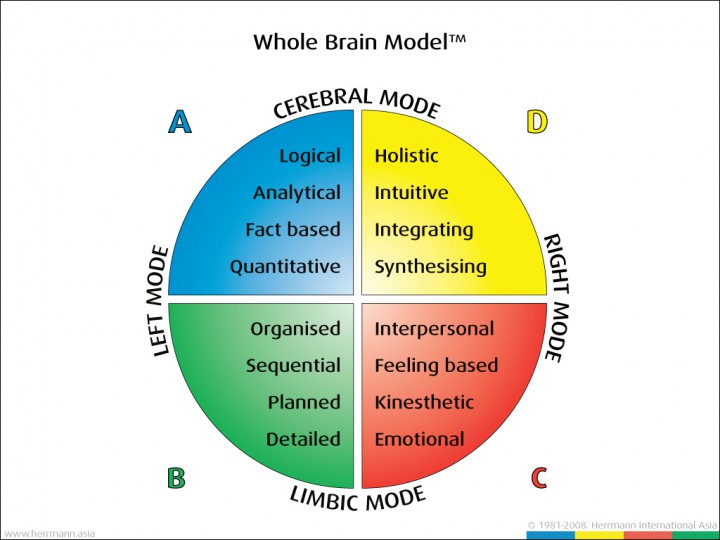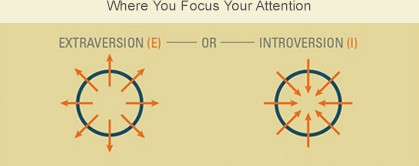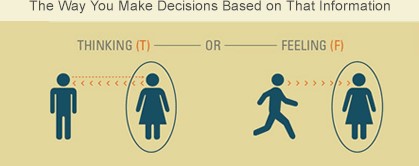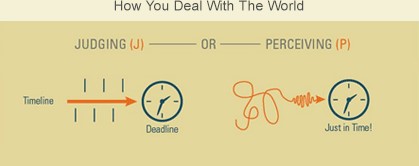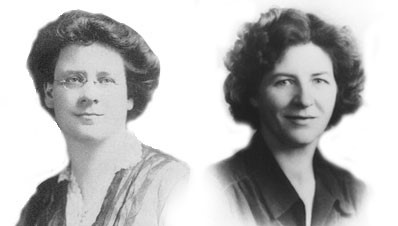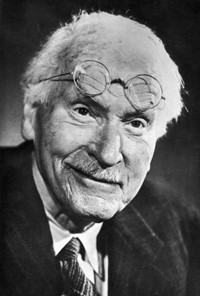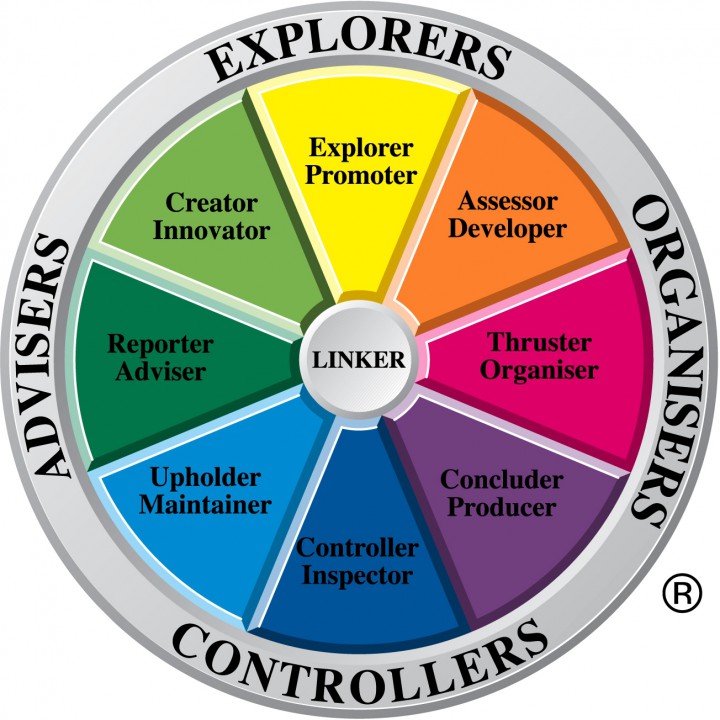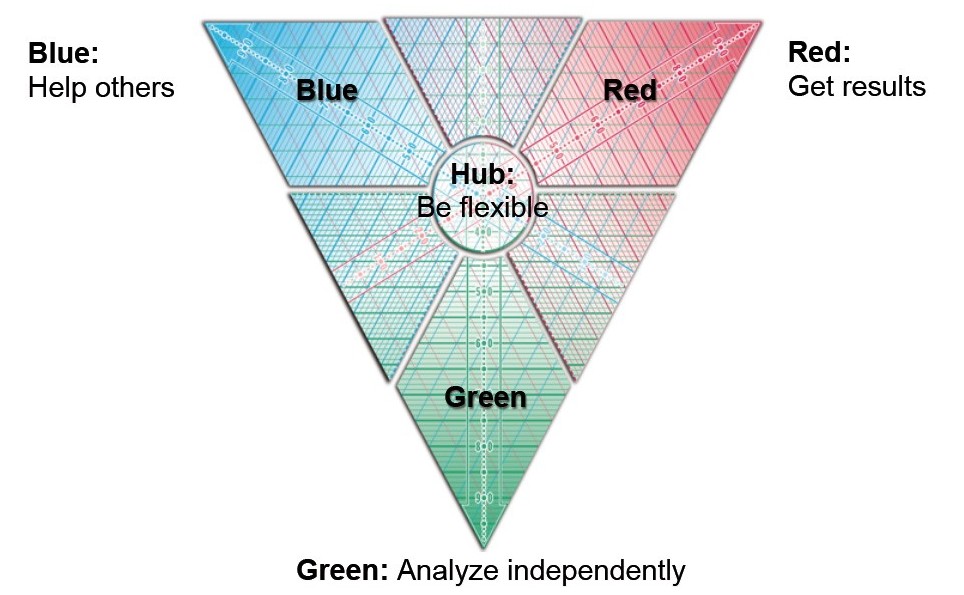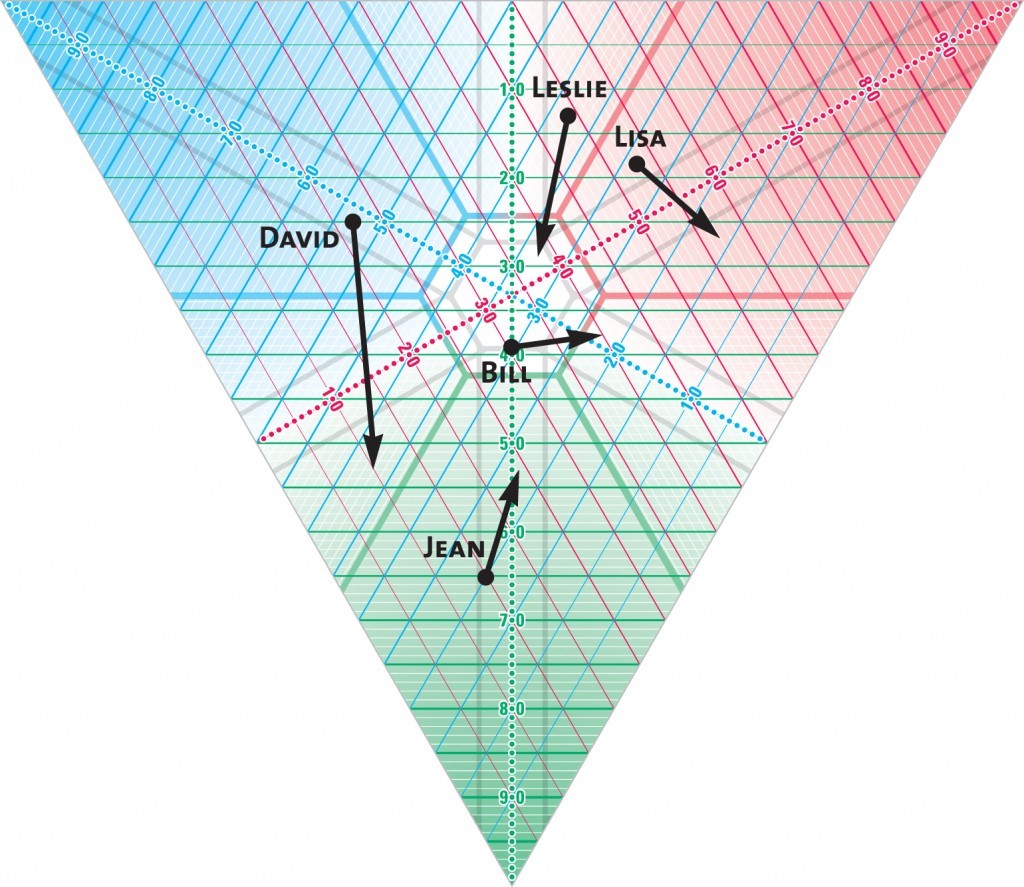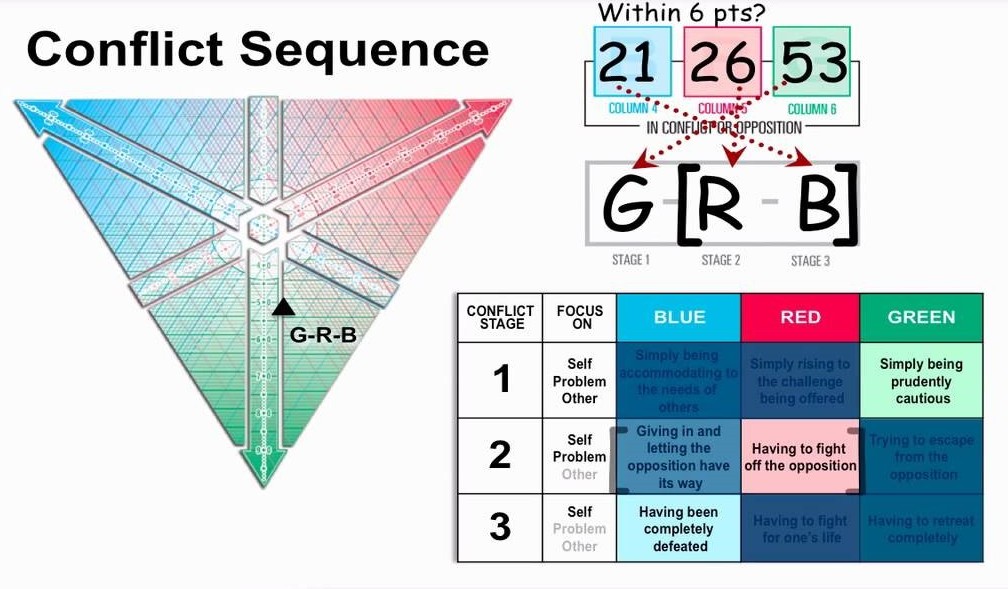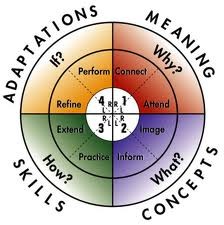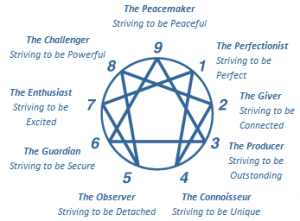Learning Tools & Models
- Herrmann Brain Dominance Instrument (HBDI)
- DiSC
- Myers Briggs Type Indicator (MBTI)
- Team Management Profile (TMP)
- Facet5
- Belbin Team Inventory
- Life Skills Inventory (LSI)
- Genos Emotional Intelligence
- Strength Deployment Inventory (SDI)
- 4MAT
- The Leadership Circle
- Enneagram
Whole Brain Technology, Thinking Preferences and the HBDI™
What is Whole Brain Technology?
Whole Brain Technology is the art and science of understanding how individuals think. Whole Brain Technology provides a basis for measuring different thinking preferences by determining the degree of dominance that has developed among four thinking styles. At the core of Whole Brain Technology is the Herrmann Brain Dominance Instrument (HBDI™) - the worldwide standard for measuring thinking preferences and brain dominance. Whole Brain Technology is scientifically designed to help you and your people think better.
What are thinking preferences?
Thinking preferences have an impact on virtually everything we do, including communication, decision making, problem solving and managing styles. Understanding your thinking preferences will give you a new perspective of yourself and people you deal with everyday.
What is the HBDI?
The Herrmann Brain Dominance Instrument (HBDI™) is the world's leading thinking styles assessment tool. It identifies your preferred approach to emotional, analytical, structural and strategic thinking. It also provides individuals with a significantly increased level of personal understanding. The HBDI™ was developed by Ned Herrmann in the 1970's. Twenty years of research and innovation stand behind the validity of the HBDI™. Over 2 million people worldwide have undergone HBDI™ analysis.
The HBDI™ is not just another assessment tool - it picks up where the other assessments leave off. Where most assessments end with a single report, the HBDI™ offer a valuable range of applications. Identifying your thinking style preferences is only the first step.
How does it work?
The HBDI™ identifies and measures the strength of preference for each of the four distinct thinking styles. These correspond to the cerebral hemispheres and the limbic system of the brain. The two left side structures combine to represent what is popularly called left brain thinking. The two right side structures combine to represent right brain thinking. The two cerebral structures combine to represent cerebral thinking and two limbic structures combine to represent limbic thinking. The HBDI™, through its series of 120 questions, is capable of measuring the degree of preference between each of the four individual thinking structures (quadrants) and each of the four paired structures (modes). This results in a four quadrant profile, which displays the degree of preference for each of the four quadrants - your HBDI™ Profile. The HBDI™ Profile package includes a full colour profile, accompanying interpretation booklets that explain the profile and scores in detail, and a discussion of the implications that your results have for business and personal life.
The HBDI™ at Work
The HBDI™ is a tool for organisational development, leadership development, personal growth and innovation. It helps organisations to:
- improve individual and team effectiveness, productivity and communication
- increase creativity that will keep you light years ahead of your competition
- consquently increase performance and bottom-line results
Once an individual or group has their HBDI™Profile, they are better able to understand their thinking styles and more importantly, the impact their thinking styles has on the way they learn, communicate and problem solve. Experience over the last 20 years has shown that individual and group applications of the HBDI™ and Whole Brain Technology are limitless.
Some specific business applications
Team Effectiveness/Team Cohesion
Encourage team building through a better understanding of individual thinking preferences and an exportation of how these thinking preferences impact behaviour and ultimately team effectiveness. Understand and value what each individual brings to a team and the contributions they can make.
Career Development
Increase job fit. Decrease turnover and job dissatisfaction. Scan for high potential leaders and factor thinking preferences into their career paths.
Communication/Conflict Resolution
Analyse your messages and their match to the thinking styles of your internal/external target audiences. Diversify and balance your communications to reach all audience segments. Reduce conflicts stemming from contrasting communication styles. Ensure effective communication with anyone, about anything, at any time.
Sales and Marketing Effectiveness
Apply thinking styles to shape market research, gain new insights into target markets and analyse trends. Factor customers' tendencies and preferences into sales/negotiation methods.
Culture Change/Organisational Learning
Assess thinking styles across learning populations. Tailor learning to match learner preferences. Factor thinking styles into your strategies for managing culture change, mergers and acquisitions.
Strategy Development
Map thinking styles of executives who shape strategy. Tailor strategy development process to turn differences from a liability into an advantage. Enhance clarity, confidence and consensus.
Creativity and Innovation
Compose R&D groups, task forces and other groups to blend out-of-the-box thinkers and risk-takers with those demonstrating preferences toward analysis, planning and implementation.
For more information on how to find out your teams thinking preference and complete your HBDI questionnaire
call 1300 ANCORA [1300 262 672]
DiSC
Introduction
DiSC assessments help Human Resources professionals, managers, and workplace experts to eliminate much of the needless mystery, misunderstanding, and conflict that stop teams from working effectively together.
Knowing your own DiSC style is helpful in understanding your own natural behavioural tendencies and how to meet your individual needs. But when building relationships with others - something we all have to do - knowing how to adapt your behaviour to improve relationships with other people improves communication and creates win/win solutions.
Each individual has a primary DiSC style, yet we are all capable of, and at times display, aspects of the other styles. DiSC can harness you with the knowledge to practice those behaviours so that you can be more adaptable when it is appropriate to do so.
DiSC personality testing is not intended to be used to label people. Instead, it's a way to help us understand their needs.
Therefore, one of the great things about understanding the DiSC model is that you can learn to recognise others' DiSC style through people-reading. When people-reading, be mindful that people are a mixture of styles, so it may be difficult to read them correctly. Pay attention to body language (posture, use of hands, facial expressions), tone of voice and expression (pace, inflection, volume) and the words chosen to deliver the actual messages.
 The Model
The Model
DiSC is an acronym for the four primary dimensions of behaviour;
- Dominance - direct, results-oriented, strong-willed and forceful
- Influence - outgoing, enthusiastic, optimistic and lively
- Steadiness - even-tempered, accommodating, patient and humble
- Conscientiousness - analytical, reserved, precise and systematic
Developed by and based on
The research behind DiSC began in the 1920’s, with work by prominent Harvard schooled psychologist William Moulton Marston (also credited with inventing the lie detector).
In 1928 he published a book, The Emotions of Normal People, which became the foundation for DiSC. In 1931, Dr. Marston published a second book, Integrative Psychology, which developed the concept further.
Though Dr. Marston’s work was crucial to the development of DiSC assessments, he never actually created an assessment tool. In 1940, Walter Clark took the theory of William Moulton Marston and developed the first DISC Personality Profile.
John Greier contributed to the assessment by producing the DISC personality profile in 1958 based on the works of Marston and Clarke. Greier conducted hundreds of clinical interviews which assisted him to further progress the fifteen patterns which Walter Clarke had exposed.
Since then, a number of publishers have updated and/or generated their own versions of the DISC assessment.
Applications
- Increase self-awareness
- Build stronger relationships
- Communicate effectively
- Develop management skills
- Effectively manage conflict
- Broaden leadership perspectives
- Create greater team cohesion
- Create harmonious organisations; and more
The details of 'How'
Everything DiSC Workplace®
The Everything DiSC Workplace profile can be used with everyone in the organisation, regardless of their title or role. Participants understand and appreciate the styles of the people they work with, resulting in more effective and productive working relationships.
This is also the most appropriate profile to use for non-workplace situations
Everything DiSC Management®
The Everything DiSC Management profile helps managers to understand themselves in a management context, and shares information on how to create more effective relationships through directing and delegating and motivating their employees.
Everything DiSC Work of Leaders®
Everything DiSC Work of Leaders approaches leadership as a one-to-many relationship, as opposed to the one-to-one relationship of management. This profile, using the framework of Vision, Alignment, and Execution, focusses on tangible steps directed at leading a group or organisation toward their desired outcomes.
Everything DiSC Sales®
The Everything DiSC Sales profile teaches salespeople how to connect better with their customers and increase sales effectiveness using DiSC styles. Salespeople can learn to enhance their communication and as therefore improve their sales relationships.
Everything DiSC 363® for Leaders
Everything DiSC 363 for Leaders combines the best of 360-degree feedback with the simplicity and power of DiSC. The profile is designed to provide multi-layered feedback, resulting in the top three strategies the leader needs to focus on to improving their leadership effectiveness.
Everything DiSC Comparison Reports®
Build better relationships and make training stick! These 10-page research-validated follow-up reports can be created for any two participants to illustrate their similarities and differences. And did we mention these reports are FREE!
Source. www.integro.com.au
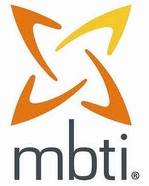 Myers Briggs Type Indicator (MBTI)
Myers Briggs Type Indicator (MBTI)
Introduction
The Myers-Briggs Type Indicator® (MBTI®) assessment has helped millions of people worldwide gain insights about themselves and how they interact with others—and improve how they communicate, learn, and work. It provides a powerful framework for building better relationships, driving positive change, harnessing innovation, and achieving excellence. The MBTI assessment makes Carl Jung's theory of psychological type both understandable and highly practical by helping individuals identify their preferences in four areas. (see graphic below)
The Model
The 16 MBTI personality types
It indicates your personality preferences in four dimensions:
- Where you focus your attention – Extraversion (E) or Introversion (I)
- The way you take in information – Sensing (S) or Intuition (N)
- How you make decisions – Thinking (T) or Feeling (F)
- How you deal with the world – Judging (J) or Perceiving (P)
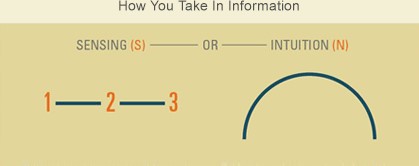
Developed by and based on
The MBTI questionnaire, first published in 1943, was originally developed in the United States by Katharine Cook Briggs and her daughter Isabel Briggs Myers. Katharine Briggs was inspired to start researching personality type theory when she first met Isabel’s future husband, Clarence Myers.
Whilst Clarence was a very eligible match for her daughter, Katharine noticed that he had a different way of seeing the world to her and her family, and was intrigued enough to start an extensive literature review based on understanding different temperaments.
It was shortly after Carl Jung’s publication of Psychological Types (1921; 1923 in English) that Katharine realised how closely his theories resembled hers, and how much more developed they were.
Inspiration from Carl Jung
The MBTI assessment is ideal for a wide range of applications, including:
- Team development—helps ease communication among team members, identify team strengths and weaknesses, and create action plans for improved performance
- Leadership development—deepens leaders’ understanding of their personality type and the types of those they are leading to help them manage better, give more meaningful feedback, and improve individual and team performance
- Conflict management—improves skills in identifying sources of conflict and intervening early to prevent underperformance, disruption, and disengagement
- Stress management—builds resilience, increases productivity, and offers strategies for identifying and managing stress triggers
- Career transition and planning—helps guide individuals on career choice, development, and management
The detail of ‘How’
There are different forms of the MBTI assessment to address different needs.
MBTI Step I (Form M): Identifies an individual's 4-letter personality type (made up of four basic preferences) and provides a common language for how we interact with the world and each other. The insights gained provide a framework for tackling a broad range of issues that can be applied in both professional and personal situations.
MBTI Step II (Form Q): Delves beyond the 4-letter type framework proposed by Step I and uncovers the many different facets of type that make each individual unique. These deeply personalized insights are perfect for coaching, action planning and building cohesive teams.
MBTI is available both online and paper based.
Source CPP Asia Pacific
The Team Management Profile
“By enhancing their knowledge and understanding of the world of work and giving them a simple language with which to communicate, you can help teams to achieve peak performance in the workplace.”
Assigning the wrong person to a task, ignoring important tasks or failing to resolve conflict can have costly consequences. The Team Management Profile is a personalised report, which gives individuals valuable insights into the way they prefer to work and their preferred role within a team. This feedback will help to improve team processes and performance, which will in turn improve motivation and job satisfaction.
The Team Management Profile highlights an individual’s major and related areas of work preference, including information focused on:
- Work Preferences
- Decision Making
- Leadership Strengths
- Interpersonal Skills
- Team Building
- Management Style
The Questionnaire
- 60 Items
- Takes approximately 15 minutes to complete
- Available electronically or paper based
- High face validity
- Written in straightforward, positive language
Reviewed by the British Psychological Society, the Team Management Profile was adapted for the workplace from the original work of Carl Jung. Unlike other psychometric instruments, which look at an individual’s total behaviour, including their home life, the Team Management Profile Questionnaire reflects research that shows that people often behave very differently at work.
Applications
- Team Building and Development
- Executive Team Coaching
- Conflict Resolution
- Team Analysis
- Improving Team Processes
- Leadership Development Programs
- Graduate Programs
Benefits
- Provides a practical model for effective teamwork in any context
- Gives an overview of how balanced the team is
- Promotes mutual understanding and respect
- Provides an opportunity for more open communication
- Gives guidance for personal and career development
- Highlights the importance of understanding and managing diversity
- Gives insights into how to resolve conflict
- Provides a complete approach to building and maintaining balanced, high-energy teams
The Personal Discovery Workbook is a standard inclusion with every Team Management Profile. Designed to take individuals through the concepts of TMS, the workbook contains theory, activities and a learning log to foster a greater understanding of work preferences and how they impact individuals and teams.
For more information on how to find out your teams thinking preference and complete your TMP questionnaire
call 1300 ANCORA [1300 262 672]
 Facet5
Facet5
Introduction
Facet5 harnesses the power of personality, supporting businesses to realise the full potential of their human capital management capability. Facet5 provides a model and a language to explain how people differ in their behaviour, motivation and attitudes, and more importantly, what to do about it.
Facet5 is a personality questionnaire specifically designed by Psychologists for use by management in organisations. It produces a comprehensive multi part report on how an individual behaves at work: actual behaviour, how to best manage, what the work strengths are likely to be, and where individual work preferences might lie.
The Model
What does it measure?
Facet5 measures 5 personality traits and 13 subfactors
- Will (Determination, Confrontation, Independence)
- Energy (Vitality, Sociability, Adaptability)
- Affection (Altruism, Support, Trust)
- Control (Discipline, Responsibility)
- Emotionality (Tension, Apprehension)
Developed by and based on
Developed by Norman Buckley and Rebekah Williams
Sound psychological theory - The five factor model of personality (or ‘Big 5’) is now widely accepted as the best way of describing the fundamental building blocks of personality.
The ‘Big 5’ model consistently emerges from psychological research as the irreducible minimum needed to give a comprehensive description of personality and behaviour.
Facet5 measures these five factors precisely and quickly to give the most accurate and easily applied portrait of individual differences in behaviour.
Application
Facet5 is easily and effectively applied across the entire employee lifecycle. From selection through to separation and exit, Facet5 engages the individual, the leader and organisation with a range of comprehensive report outputs.
Whether building a team, integrating a new hire or looking at organisational culture, Facet5 enables best-practice people management.
The details of ‘How’
Online Survey
For more information on how to find out how to complete your Facet5 questionnaire
call 1300 ANCORA [1300 262 672]
 Belbin Team Inventory
Belbin Team Inventory
Introduction
“A team is not a bunch of people with job titles, but a congregation of individuals, each of whom has a role which is understood by other members. Members of a team seek out certain roles and they perform most effectively in the ones that are most natural to them. By identifying our Team Roles, we can ensure that we use our strengths to advantage and that we manage our weaknesses as best we can. Sometimes, this means being aware of the pitfalls and making an effort to avoid them." Dr. R. M. Belbin
The Model
PLANT (PL)
The first Team Role to be identified was the Plant. The role was so-called because one such individual was “planted” in each team. They tended to be highly creative and good at solving problems in unconventional ways.
MONITOR EVALUATOR (ME)
One by one, the other Team Roles began to emerge. The Monitor Evaluator was needed to provide a logical eye, make impartial judgements where required and to weigh up the team’s options in a dispassionate way.
CO-ORDINATOR (CO)
Co-ordinators were needed to focus on the team’s objectives, draw out team members and delegate work appropriately.
RESOURCE INVESTIGATOR (RI)
When the team was at risk of becoming isolated and inwardly-focused, Resource Investigators provided inside knowledge on the opposition and made sure that the team’s idea would carry to the world outside the team.
IMPLEMENTER (IMP)
Implementers were needed to plan a practical, workable strategy and carry it out as efficiently as possible.
COMPLETER FINISHER (CF)
Completer Finishers were most effectively used at the end of a task, to “polish” and scrutinise the work for errors, subjecting it to the highest standards of quality control.
TEAMWORKER (TW)
Teamworkers helped the team to gel, using their versatility to identify the work required and complete it on behalf of the team.
SHAPER (SH)
It was only after the initial research had been completed that the ninth Team Role, Specialist emerged. In the real world, the value of an individual with in-depth knowledge of a key area came to be recognised as yet another essential team contribution.
SPECIALIST (SP)
It was only after the initial research had been completed that the ninth Team Role, Specialist emerged. In the real world, the value of an individual with in-depth knowledge of a key area came to be recognised as yet another essential team contribution.
Balance is Key -During his research, Meredith found that each of the behaviours were essential in getting the team successfully from start to finish. The key was balance. For example, Meredith Belbin found that a team with no Plants struggled to come up with the initial spark of an idea with which to push forward.
However, once too many Plants were in the team, bad ideas concealed good ones and non-starters were given too much airtime. Similarly, with no Shaper, the team ambled along without drive and direction, missing deadlines. With too many Shapers, in-fighting began and morale was lowered.
Strengths and Allowable Weaknesses -As well as the strength or contribution they provide, each Team Role also has an associated allowable weakness: a flipside of the behavioural characteristics, which is allowable in the team because of the strength which goes with it.
For example:
- Plants could be unorthodox or forgetful
- Resource Investigators might forget to follow up on a lead
- Monitor Evaluators could be overly critical and slow moving
- Co-ordinators might over delegate leaving themselves little work to do
- Implementers might be slow to relinquish their plans in favour of positive changes
- Completer Finishers could be accused of taking their perfectionism to the extremes
- Teamworkers might become indecisive when unpopular decisions need to be made
- Shapers could risk becoming aggressive and bad-humoured in their attempts to get things done
- Specialist may have a tendency to focus narrowly on their own subject of choice
In a nutshell, Belbin Team Role reports give a common language to show clusters of behaviour that are needed in the workplace.
Developed by and based on
Belbin Team Roles measure behaviour, not personality, and so can be defined as:
A tendency to behave, contribute and interrelate with others in a particular way. Dr. Meredith Belbin
Belbin's 1981 book Management Teams presented conclusions from his work studying how members of teams interacted during business games run at Henley Management College.
Amongst his key conclusions was the proposition that an effective team has members that cover eight (later nine) key roles in managing the team and how it carries out its work. This may be separate from the role each team member has in carrying out the work of the team.
Application
Belbin Team Roles are used to identify people's behavioural strengths and weaknesses in the workplace. This information can be used to:
- Build productive working relationships
- Select and develop high-performing teams
- Raise self-awareness and personal effectiveness
- Build mutual trust and understanding
- Aid recruitment processes
A team should be put together for a specific purpose. Each team member should be chosen to ensure that the correct balance of skill and behaviour is achieved.
This doesn't mean that you need nine individuals, each with one strong Team Role in each team. Each of us can play two or three Team Roles well, and should learn to adapt our behaviour to the needs of the of team's objective.
The details of ‘How’
Online Survey where you also seek input from 5 other individuals in addition to your own responses.
For more information on how to find out your teams Belbin profile or how to complete your assessment
call 1300 ANCORA [1300 262 672]
Life Skills Inventory
The Life Styles Inventory™ (LSI) is a measurement and feedback tool designed to help individuals identify how their thinking and behaviour are helping and hindering their effectiveness. It is made up of two parts:
LSI 1 Self-Description
This can be a stand-alone instrument. It measures personal thinking styles and relates these to perceived effectiveness (self-efficacy) and satisfaction at work and at home. Used in conjunction with LSI2 Description by Others it enables comparison of self perceptions and others perceptions of an individual's behaviors and effectiveness.
LSI 2 Description by Others
The focal individual selects colleagues who then describe their experience of the individual’s behaviour. These observed behaviours can then be compared to the individual's self perception, along with comparing self and others’ rating to the effectiveness questions.
Having measured their thinking styles and behaviour, the Self-Development Guide used with personal coaching helps the individual develop improvement strategies for building Constructive thinking and behaviour.
Who Should Use It?
LSI is a personal styles tool. It measures the individual’s generic ways of thinking and behaving that affect how they deal with events as they occur including task related work events and interpersonal relationships. Because of this, LSI is suitable for any individual looking to reflect on their own thinking and behaviour.
In our experience, the LSI is used mostly by managers and leaders as part of an organizational leadership development program. In some organisations it is offered at all levels as a managerial/leadership development tool for managers and as a personal development tool for non-managers.
Why Use It?
Effective individuals are aware of how their own thinking influences their ‘take on life’ and they are aware of how they respond to others and the impact their behaviour has on others in their current roles. Providing such feedback to people, particularly those in a supervisory, managerial and/or leadership role, is an important part of developing effectiveness in the supervisory/managerial/leadership role.
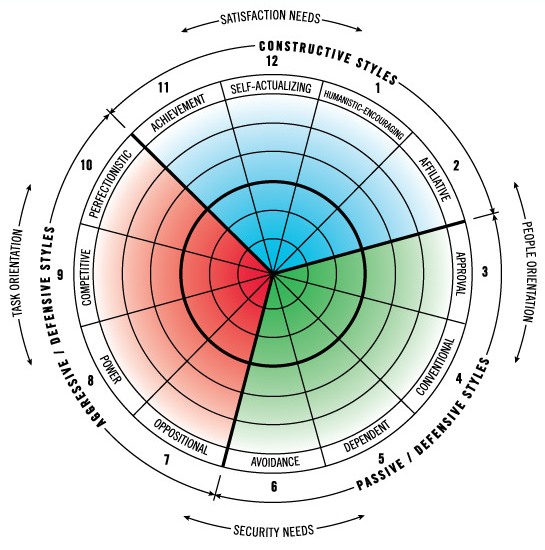 Profiling Thinking and Behaviour: Human Synergistics Circumplex
Profiling Thinking and Behaviour: Human Synergistics Circumplex
The Human Synergistics behavioural measurement and feedback tools are all integrated through the use of circumplexes that profile 12 styles, each related to the others in a systematic and statistically reliable and valid way.
These styles are then clustered into 3 groupings – Constructive, Passive/Defensive and Aggressive/Defensive. For simplicity's sake and to increase understanding and acceptance of feedback, we use the colour identities of blue for Constructive styles, green for Passive/Defensive styles and red for Aggressive/Defensive styles.
Outcomes Measured
Satisfaction
The LSI 1 (Self-Description) incorporates two groups of questions to measure the outcomes associated with personal thinking styles:
- Current job or position
- Work-related accomplishments over the past year
- Career prospects
- Organization
- Interpersonal relations with superiors at work
- Interpersonal relations with co-workers/peers
- Co-workers’ capabilities and contributions
- Ability to handle stress
- Family life
- Leisure time activities
- Health
- General state of mind
- Personal growth and development
Personal Effectiveness
The LSI 1 (Self-Description) measures these outcomes as self-perception of effectiveness in current situation (generally work). These have implications for self-efficacy as a measure of the individual’s confidence in their own abilities. They also provide a comparison point when assessing the difference between LSI 1 (Self-Description) and LSI 2 (Description by Others).
The effectiveness rating included as part of the feedback from others are:
- On the job effectiveness
- Quality of interpersonal relationships
- Level of stress and tension
- Organisational ‘fit’
- Time management
- Readiness for promotion
- Level of organizational support
- Reaction to negative feedback
- Interest in improving self
- Ability to change behaviour
For more information on how to find out how to complete your LSI questionnaire
call 1300 ANCORA [1300 262 672]

Genos EI
Introduction
Emotional intelligence research indicates EI is a key driver of exceptional performance in individuals and organisations.
Emotional intelligence (EI) was made popular by author Daniel Goleman.
Raising people’s self- awareness and understanding of others unlocks potential and improves effectiveness, relationships and leadership capability.
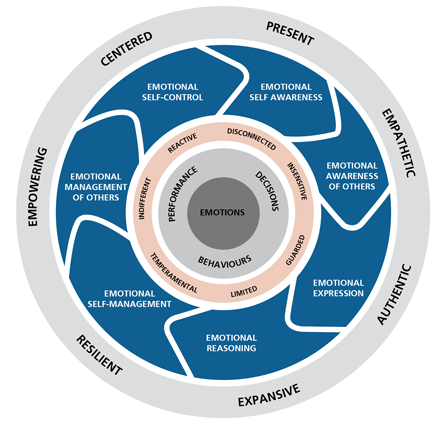
The model
The Genos model of Emotional Intelligence involves seven core emotional intelligence skills identified in research on a wide variety of different models and measures of EI. We use the seven skills of the model to develop the productive being states, shown on the outside of the model, and to minimize the unproductive being states, shown on the inside of it.
Key Areas Measured
Emotional Self-Awareness
The skill of perceiving and understanding one’s own emotions.
- The skill of perceiving and understanding one’s own emotions.
- The capacity to identify and understand the impact one’s own feelings is having on thoughts, decisions, behavior and performance at work
Greater self-awareness
Leadership competencies related to this are:
- Role Model
- Self-Awareness
- Decision making
Emotional Expression
The skill of effectively expressing one’s own emotions.
- Creating greater understanding amongst colleagues about yourself
- Creating trust and perceptions of genuineness amongst colleagues
Leadership competencies related to this are:
- Understanding different working styles
- Adaptive or Situational leadership
- Inspiring high performance
Emotional Self-Awareness of Others
The skill of perceiving and understanding others’ emotions.
- Greater understanding of others, how to engage, respond, motivate and connect with them
- Interpersonal effectiveness
Leadership competencies related to this are:
- Building Trust
- Giving effective feedback
- Working Collaboratively
Emotional Reasoning
The skill of utilizing emotional information in decision-making.
- Enhanced decision-making where more information is considered in the process
- Greater buy-in from others into decisions that are made
Leadership competencies related to this are:
- Driving change
- Decision making
- Gaining commitment
Emotional Self-Management
The skill of effectively managing one’s own emotions.
- Improved job satisfaction and engagement
- Improved ability to cope with high work demands
- Greater interpersonal effectiveness
- Enhanced productivity and performance
Leadership competencies related to this are:
- Role model
- Managing high work loads
- Driving results
Emotional Management of Others
The skill of influencing the moods and emotions of others.
- The capacity to generate greater productivity and performance from others
- The capacity to generate a positive and satisfying work environment for others
- The capacity to effectively deal with workplace conflict
Leadership competencies related to this are:
- Driving high performance
- Managing conflict
- Inspiring achievement. Driving change
Emotional Self-Control
The skill of effectively controlling strong emotions experienced.
- Emotional well-being
- The capacity to think clearly in stressful situations
- The capacity to deal effectively with situations that cause strong emotions
Leadership competencies related to this are:
- Role model
- Self-control
- Executive maturity
Developed by and based on
The Genos Model of Emotional Intelligence was developed in the late 1990s by Dr. Ben Palmer and Professor Con Stough from Swinburne University. The Genos Emotional Intelligence Inventory (Genos EI) is identical to, and often referred to, as the Swinburne University Emotional Intelligence Test (or SUEIT)
Application
Predominantly for leadership development and internal talent benchmarking or identification.
Leadership Development
Most organizations use this assessment at the beginning of leadership development programs to provide insight into current levels of emotional intelligence and how to improve it. It is also used at the conclusion of development programs to measure the impact or effectiveness of the development intervention.
To identify talent
The Emotional Intelligence assessment is used to identify people with excellent soft skills, people who will make great leaders, sales or customer service personnel. In this context it is used in recruitment (external or internal hires) and internal talent benchmarking.
To develop talent
The Emotional Intelligence assessment and development programs are used to develop soft skills crucial to success in leadership, sales, teamwork and customer.
The details of ‘How’
This is an online Survey. Multi - Rater or Self Assessment. It takes about 15 minutes to complete.
For more information on how to find out how to complete your Genos EI questionnaire
call 1300 ANCORA [1300 262 672]
 Strengths Deployment Inventory
Strengths Deployment Inventory
Introduction
People work together more effectively when they better understand their own and others’ strengths. SDI® (Strength Deployment Inventory®) is a self-awareness tool that bridges the gap between motivation and behaviour by providing two integrated personality assessments that measure when things are going well and when in conflict.
The Model
When completing the SDI® the learner responds to 20 statements that look at the following two dimensions:
The first dimension of SDI helps people understand their motivations and relating styles.
SDI is non-judgemental – there are no right or wrong answers or ideal scores. Each person’s set of scores will position them in two areas on a unique coloured triangle which is then explained in terms of their Motivational Value System™ and their Conflict Sequence™.
Motivation is important because it remains constant and is therefore a more reliable reference when seeking to understand intentions. Behaviour on the other hand can vary depending on the circumstances and what motives the person is seeking to satisfy.
What makes SDI so easy to complete, remember and apply is that it uses colour and their blends to represent the following 7 Motivational Value Systems. This provides a common language that helps facilitate conversations about interpersonal issues.
The SDI Triangle™
The results of the SDI® are transferred to a simple but effective visual aid – the SDI Triangle.
4 types of people according to their SDI motivation
Motivational Value System™
Altruistic–Nurturing (BLUE) Concern for the protection, growth, and welfare of others.
Assertive–Directing (RED) Concern for task accomplishment and concern for organisation of people, time, money and any other resources to achieve desired results.
Analytic–Autonomising (GREEN) Concern for assurance that things have been properly thought out and concern for meaningful order being established and maintained.
Flexible–Cohering (HUB) Concern for flexibility, concern for the welfare of the group, concern for the members of the group and for belonging in the group.
Assertive–Nurturing (RED-BLUE) Concern for the protection, growth, and welfare of others through task accomplishment and leadership.
Judicious–Competing (RED-GREEN) Concern for intelligent assertiveness, justice, leadership, order, and fairness in competition.
Cautious–Supporting (BLUE-GREEN) Concern for affirming and developing self-sufficiency in self and others, concern for thoughtful helpfulness with regard for justice.
Results are charted as an arrow representing both the person’s unique Motivational Value System and Conflict Sequence. This non-threatening visual aid makes it easy for people to remember and appreciate the whole picture.
People learn how diversity in relating styles is a source of strength and gain insight into how to work with differences to avoid misunderstanding and conflict.
Understand your Conflict Sequence™
Conflict Sequence™ is a three stage set of motivational changes that influence the behavioural choices each person makes when relationships are not going well.
Many experts believe that unresolved conflict represents the largest reducible cost for business.
In most workplaces, it continues to be addressed in ad hoc, random and ineffective ways.
SDI makes it easier to prevent and resolve conflict before it becomes overwhelming or causes irretrievable and costly damage to personal or organisational relationships.
SDI reveals:
- What triggers conflict
- How people change their priorities during conflict
- What people focus on during conflict
- Why people misread the behaviours of others, causing even more conflict
SDI provides a positive, non–threatening way to start crucial conversations that address conflict.
Developed by and based on
In 1971, Elias Porter PhD introduced the SDI and Relationship Awareness Theory to the world. His theory focuses on personal strengths and their underlying motivations as the key to understanding people and improving relationships. The SDI is the practical application of the theory and was the first personality assessment to use colors.
The theory behind the SDI first began to take shape in the 1950s when Elias Porter was part of the team that introduced client-centered therapy and the human potential movement. Porter worked closely with Carl Rogers at the University of Chicago, where he began working with personality assessments and was a contributor Rogers’ client-centered concepts Porter’s earliest assessments were based on Erich Fromm’s descriptions of non-productive personalities, which were an advancement of Sigmund Freud’s concepts.
Relationship Awareness Theory™
Relationship Awareness theory underpins SDI. It is a motivational typology that has proven to be very accurate in determining the motivations behind behaviour.
The theory itself is founded on four simple, yet profound, premises:
- Behaviour is driven by motivation to achieve or maintain self-worth;
- Motivation changes in conflict;
- Strengths, when overdone or misapplied, can be perceived as weaknesses; and
- Personal filters influence perceptions of self and of others.
Applications
- Leadership Development
- Team Building
- Conflict Management
- Customer Service
- Project Management
- Change Management
- Organisational Culture
- Communication
- Mediation Training
- Strategic Planning
The details of ‘How’
Online Survey
For more information on how to find out how to complete your SDI assessment
call 1300 ANCORA [1300 262 672]
 4MAT
4MAT
Introduction
4MAT is a method for helping anyone learn anything. It has been used in thousands of teaching settings for over 25 years.
The 4MAT® Model explains learning in terms of the ways people perceive and process information
The Model
A Cycle of Instruction
Learning Styles
Type One
Imaginative Learning–Feeling and watching, seeking personal associations, meaning, involvement.
Making connections. Key question: Why?
Type Two
Analytic Learning–Listening to and thinking about information; seeking facts, thinking through ideas; learning what the experts think.
Formulating ideas. Key question: What?
Type Three
Common Sense Learning–Thinking and doing. Experimenting, building, creating usability. Tinkering.
Applying ideas. Key question: How?
Type Four
Dynamic Learning–Doing and feeling. Seeking hidden possibilities, exploring, learning by trial and error, self-discovery.
Creating original adaptations. Key question: If?
Developed by and based on
Dr. Bernice McCarthy (USA) developed the first basic structure of the 4MAT system in the late 1970s. Since then, the method has systematically and continuously been used, developed and linked to the newest research in the field.
Extract from an interview by MF Shaughnessy with Bernice McCarthy -When did you first conceptualize your 4MAT Teaching Model?
‘My interest in learning theory really flourished at Northwestern. I studied Carl Jung’s work in psychological types, Curt Lewin’s learning cycle, David Kolb’s work in learning style descriptions and research, John Dewey and Jean Piaget, of course, and Carl Roger’s work in humanistic teaching and counseling. In addition I was intrigued with the leadership and change theories of Chris Argyris and Daniel Schoen. After my doctorate, I spent a year studying what was, in the early 80’s, the new and exciting brain research on hemisphericity of Roger Sperry and Joseph Bogan.’ Bernice McCarthy
Application
- Instructional Design
- Communication
- Train the Trainer
For more information on how to find out how to complete your 4MAT assessment
call 1300 ANCORA [1300 262 672]
The Leadership Circle
Introduction
Get an "MRI" of your leadership. The Leadership Circle Profile™ is the only 360-degree assessment that measures leadership competencies and the inner assumptions that drive behavior. In an instant, managers discover what they are doing, why they are doing it, and key opportunities for development. Ultimately, this assessment cultivates awareness and insights that enhance effectiveness in leadership and impacts performance.
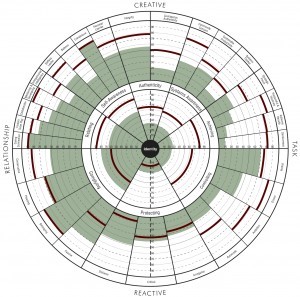 The Model
The Model
While most 360 degree assessments tell you only what is or is not contributing to a leader’s effectiveness, the Leadership Circle Profile also tells you “why” this is so. It gives the leader causational insight into what is happening beneath the surface.
This powerful difference puts The Leadership Circle Profile in a class of its own. The Leadership Circle Profile is the only 360 degree profile that measures both competency and underlying assumptions and it does so in two primary leadership domains: Creative Competencies and Reactive Tendencies.
Two Domains of Leadership
Creative competencies
Creative competencies are well-researched competencies that measure how leaders achieve results, bring out the best in others, lead with vision, enhance your own development, act with integrity, and encourage and improve organisational systems.
Reactive tendencies
Reactive tendencies are leadership styles that emphasise caution over creating results, self-protection over productive engagement, and aggression over building alignment. These self-limiting styles overemphasise the focus on gaining the approval of others, protecting oneself, and getting results through high control tactics.
Then, the Leadership Circle Profile integrates this information so that key opportunities for development immediately rise to the surface. Most importantly, the Leadership Circle Profile is unique because it reveals a leader’s operating system–the internal assumptions or beliefs that guide behaviour in both domains.
This system allows managers to see how their inner world translates into a effective or ineffective leadership. Using this approach increases the inner awareness that correspondingly affects outward behaviour.
Developed by and based on
While working as a manager in manufacturing, Bob completed a Master’s degree in Organisational Development. Early in his career, he was fortunate to have had Peter Block as his mentor. He has also worked closely with some of the industry’s most respected names including Peter Senge, Robert Fritz, and Ken Wilber. Bob and David Whyte co-taught leadership workshops created by Bob.
Bob Explains, “We now recognise that leadership is a process of transformation whereby a leader is encouraged to make a profound shift—to gain a deeper under-standing of themselves, the world, and their relationship to others. This deeper, longer term work is what our Leadership Circle Profile brings to the table, what The Leadership Circle stands for, and this is the kind of work we invite organisations to experience.”
Details of ‘how’
Online Survey
Source 
The Enneagram
Introduction
The Enneagram of personality is a versatile and powerful personality type system. Mapped around an ancient symbol of perpetual motion, the Enneagram system describes nine distinct personality types and their interrelationships.
Each personality type associated with the Enneagram represents a map of traits that highlights patterns of thinking, feeling, and behaving. By learning one’s type and the patterns and habits associated with that type, one can use of the Enneagram system as an effective tool for self-understanding and self-development.
Each Enneagram personality type, or style, is based on a pattern of where attention goes. By learning about what kinds of things one habitually attends to and puts energy into, one can observe oneself more accurately and develop more self-awareness. By enhancing one’s self awareness with the help of the Enneagram, one can exercise more choice about one’s functioning rather than engaging in patterns of thought, emotion, and behavior in an automatic, habitual, unconscious way.
The Riso-Hudson Enneagram Type Indicator (RHETI) is the most popular Enneagram based test.
The Model
Your Basic Personality Type
From one point of view, the Enneagram can be seen as a set of nine distinct personality types, with each number on the Enneagram denoting one type. It is common to find a little of yourself in all nine of the types, although one of them should stand out as being closest to yourself. This is your basic personality type.
Enneagram type 1
Major traits: include a strong internal critic, a tendency to criticize or judge others, a concern with ethics and correct behavior, and the adherence to rules and standards. Ones also tend to be perfectionists and idealists.
Strengths: Ones are typically reliable, analytical, and moral. They often demonstrate integrity (consistent adherence to a set of values) and a desire to improve things for the good of all.
Challenges: for Ones include dealing with their own anger, managing their perfectionism, and being overly critical of self and others.
Enneagram type 2
Major traits: Twos can be upbeat and cheerful, and they pride themselves on intuitively knowing what others need, often believing that they know what is best for others. However, this outward focus on others may mask a less confident inner self, Twos often have difficulty identifying their own needs or getting them met directly. Twos can be very empathic, friendly, and giving, and yet may become resentful if their generosity is not appreciated or reciprocated.
Strengths: Twos often make friends easily, can be thoughtful, attentive and fun-loving, and they also tend to be competent and driven.
Challenges: Twos often neglect their own needs, try to indirectly orchestrate the behavior of other people, and can be fearful of real intimacy with others.
Enneagram type 3
Major traits: include an excessive focus on work and tasks, concern with image and the approval of others, and a competitive striving for status and recognition.
Strengths: Threes can be industrious, energetic, and attractive.
Challenges: They can be workaholics, unaware of their real feelings, and unable to slow down and simply be.
Enneagram type 4
Major traits: include a desire to feel special or unique, a concern with authenticity, a preoccupation with the search for the ideal forms of love or connection, and a wistful pleasure with melancholy. Unlike some other types, Fours tend to be comfortable with emotions and can be sensitive to the emotional tone of situations and relationships.
Strengths: Fours can be emotionally strong, authentic, artistic, and sensitive.
Challenges: Fours can be entitled, dramatic, dissatisfied in relationships, and depressed.
Enneagram type 5
Major traits: Fives describe an inner experience of scarcity or lack, especially in terms of time and energy. They typically feel a strong need to hoard these resources and may become resentful when others threaten to impose on them, especially emotionally. Fives tend to be knowledgeable, emotionally detached, analytical, and objective observers.
Strengths: Fives are often objective, calm in a crisis, knowledgeable, and analytical.
Challenges: They may also be too emotionally detached, and their sense of inner lack often leads to withdrawing from others, creating excessive boundaries, and to the illusion that energy is limited and must be (over)protected.
Enneagram type 6
Major traits: Most Sixes have a complex relationship to authority. They want authority figures to protect them, while simultaneously doubting the authority figure's willingness or ability to do so. They may also be fearful and anxious (phobic), or challenging and rebellious (counter-phobic). Sixes tend to suspect people's motives, and their concern with what can go wrong in situations can lead to procrastination. They can also be good troubleshooters and loyal supporters.
Strengths: Sixes are often intuitive, loyal, analytical, and have the ability to challenge authority (counter-phobic) or see through false pretenses.
Challenges: They may be overly suspicious or paranoid may project their own thoughts feelings and motives onto others, often have issues with trust, and may get stuck in self-doubt or excessive questioning.
Enneagram type 7
Major traits: Sevens can be fast-paced, fun loving, imaginative, and afraid of commitment. They often become enamored with their own associational thinking style, enjoy adventure and stimulation, and believe in keeping the mood positive and forward moving.
Strengths: Sevens are usually adventurous, fun, positive, upbeat, and optimistic.
Challenges: It can be difficult for many Sevens to make and keep commitments or deal with pain: They often believe the following: Why feel bad or suffer when there is the choice to be happy? Sevens also have difficulty staying focused or dealing with emotionally charged interactions.
Enneagram type 8
Major traits: Eights can be impulsive, excessive, dominant, and protective of others. They often move into action before thinking things through, express their anger more easily than the other types, and confront situations more readily than others. They seek the truth, but may confuse objective reality or truth with their own personal reality or beliefs.
Strengths: Eights tend to be strong, powerful, commanding, energetic, and intense.
Challenges: They can also have difficulty containing their own energy and anger, be controlling, and be unaware of their own vulnerabilities.
Enneagram type 9
Major traits: Nines merge with others energetically, taking on the feel and positions of others, thus losing touch with their own internal experience and priorities. As one of the three anger types, Nines can be very out of contact with their own anger, which can leak out in the form of passive-aggression, stubbornness, and passive resistance. Typically they are more focused on others than on themselves.
Strengths: Nines can be skilled mediators and loyal, steadfast partners and friends. They can also be warm, understanding and caring.
Challenges: They can also have difficulty feeling and expressing anger, dealing with conflict, knowing what they want, and differentiating their experience from others in their lives
The details of "How"
Online Survey
For more information on how to find out how to complete your Enneagram assessment
call 1300 ANCORA [1300 262 672]


